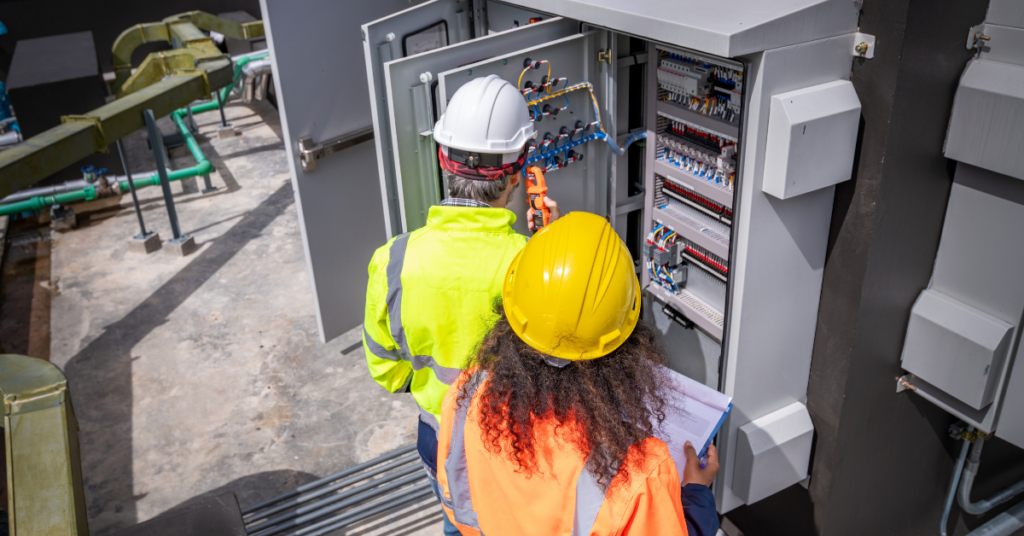For any utility, grid stability depends on how well its protection systems function. When an electrical fault occurs—whether from a lightning strike, equipment failure, or a short circuit—the grid’s protection system is supposed to detect it, isolate it, and prevent widespread damage. That system relies on relays.
When relays operate correctly, they clear faults before they escalate, protecting transformers, substations, and transmission lines. But when a relay malfunctions—either by failing to trip when it should or tripping unnecessarily—entire sections of the grid can be affected. Misoperations lead to blackouts, costly damage, and regulatory scrutiny.
Relay testing services exist to prevent these failures before they happen. Yet, many utilities still rely on outdated or irregular testing methods, leaving them exposed to risks that could have been avoided. Utilities that take a proactive, data-driven approach to relay testing can significantly reduce outages, lower maintenance costs, and improve overall grid reliability.
The Consequences of Relay Failures
Every major blackout starts somewhere. Sometimes it’s a weather event, other times it’s a mechanical failure. But in many cases, it’s a relay that either didn’t operate when needed or one that triggered when it shouldn’t have.
Relays are supposed to be the first line of defense against grid failures. They detect abnormalities and send a signal to breakers to isolate faults before they spread. But without routine and accurate testing, utilities can’t be sure their relays will perform as designed.
- Aging relays can misoperate, either failing to detect faults or tripping too easily.
- Improper settings and calibration issues cause nuisance trips, leading to unnecessary outages.
- Coordination failures between relays result in cascading blackouts, where a single fault spreads beyond the intended isolation zone.
Relay misoperations aren’t just hypothetical risks. They have caused some of the most significant blackouts in history, including the 2003 Northeast Blackout, which left 50 million people across the U.S. and Canada without power. Investigations found that relay coordination failures played a role in the outage’s escalation—an event that cost billions in economic losses and regulatory fines.
Even on a smaller scale, a single relay failure can take a transformer offline, cause voltage instability, or lead to unnecessary breaker operations that disrupt customer service. These failures are expensive, preventable, and a direct consequence of inadequate relay testing practices.
How Think Power Solutions Helps Utilities Prevent Relay Failures
At Think Power Solutions, we understand that relay testing is about more than just compliance—it’s about keeping the grid secure and resilient. Our approach ensures that utilities don’t just meet NERC PRC-005 standards, but go beyond the minimum to create a robust, failure-proof protection system.
Utilities that partner with us for relay testing services benefit from:
- Comprehensive Testing That Reflects Real-World Conditions – We don’t just test relays in isolation. We test them as part of the entire protection scheme, ensuring proper coordination between relays, breakers, and transformers.
- Advanced Digital Testing & Simulation – Today’s microprocessor-based relays require dynamic testing methods. We use automated test sequences and real-time simulations to verify performance under actual operating conditions.
- Coordination Studies to Prevent Miscoordination – Proper relay coordination is critical. If relays don’t communicate correctly, faults won’t be cleared efficiently, leading to wider outages and system instability. We ensure that relays operate at the right time, with the right settings, and in the right sequence.
- Customized Testing Schedules Based on Grid Conditions – Not every relay needs the same testing frequency. We work with utilities to develop optimized maintenance schedules that balance compliance with operational efficiency.
- Regulatory Compliance Without the Guesswork – Keeping up with NERC, IEEE, and utility-specific standards can be overwhelming. Our relay testing programs ensure utilities remain compliant while also improving system performance.
Recently, Think Power worked with a transmission utility that had been experiencing frequent nuisance trips in one of its high-voltage substations. Through relay testing and coordination analysis, we identified setting errors that had gone unnoticed for years. By fine-tuning relay configurations and implementing a streamlined testing program, we helped the utility reduce false trips and improve overall grid stability.
The Hidden Costs of a Reactive Approach to Relay Testing
Too many utilities treat relay testing as a reactive task, only conducting tests when required by regulations or after an incident has already occurred. This approach leads to:
- Higher failure rates, as aging relays develop undetected faults.
- Emergency maintenance costs, since unexpected failures require immediate (and expensive) repairs.
- Longer outage durations, as crews scramble to diagnose misoperations in real time.
A proactive relay testing strategy saves money and prevents catastrophic failures before they happen.
- Condition-Based Testing ensures relays are tested at appropriate intervals based on actual performance data, rather than arbitrary time schedules.
- Predictive Analytics identify weak relays before they cause operational issues, reducing the risk of unplanned outages.
- Automated Testing Procedures improve accuracy, eliminate human error, and make compliance documentation easier.
Why Modern Grids Require a Smarter Relay Testing Approach
Utilities today are dealing with a more complex grid than ever before. Increased loads, aging infrastructure, and the rise of distributed energy resources (DERs) like solar and wind have changed the way protection systems must operate.
Older relay testing practices were built for a grid that was predictable and centralized. But in today’s environment, protection systems must be more adaptive and intelligent.
That’s why TPS is helping utilities transition to:
- AI-Enhanced Fault Detection – Machine learning algorithms can analyze relay performance trends and flag potential failures before they occur.
- Digital Twin Technology – Simulating relay operations in a virtual environment to test responses before they happen in the field.
- Advanced Data Analytics – Using real-time grid data to adjust relay settings dynamically, ensuring optimal performance under changing conditions.
Relay testing isn’t just about maintaining old equipment anymore—it’s about future-proofing the grid.
Final Thoughts: Is Your Utility Prepared for the Next Fault?
Every fault event tests a utility’s protection systems. If relays don’t operate as expected, the consequences can be severe—prolonged outages, equipment damage, and regulatory penalties.
Think Power Solutions ensures that utilities don’t just test relays for compliance but for real-world resilience. A well-tested relay system means:
- Faster fault clearance, reducing outage times.
- Lower maintenance costs by preventing unnecessary breaker operations.
- Stronger grid stability, even as demand and generation patterns evolve.
Relay failures are preventable—but only with a consistent, proactive, and data-driven testing approach.
The next time a fault event tests your grid, will your relays be ready?



